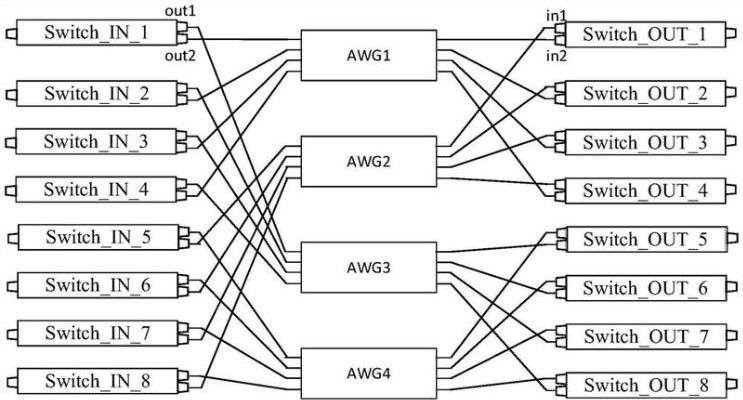
1. Spatial Division Optical Switching

The function of spatial division optical switching is to alter the transmission path of optical signals in space. The core component of spatial division optical switching is the optical switch. Optical switches come in various types, including electro-optic, acousto-optic, and magneto-optic. Among these, electro-optic optical switches offer advantages such as fast switching speed, low crosstalk, and compact structure, making them highly promising for future applications.
2.Time-division optical switching

Time-division optical switching is based on time-division multiplexing and uses the principle of time slot exchange to achieve switching functionality. Time-division multiplexing divides time into frames, each frame into N time slots, and assigns these slots to N signals, which are then multiplexed onto a single optical fiber. To achieve time slot exchange, the time-division multiplexed signal is first separated into individual signals using a splitter, then these signals are passed through different optical delay elements, and finally recombined using a combiner.
3.Wavelength-Division Optical Switching
Wavelength-division optical switching (or cross-connection) is based on wavelength-division multiplexing principles, using wavelength selection or wavelength conversion methods to achieve switching functionality. To achieve wavelength division switching, the WDM optical signals carried by N input fibers are first separated into W different wavelength signals using demultiplexers (wavelength splitters). All N×W wavelengths are then cross-connected using spatial division multiplexers, and finally multiplexed back onto N output fibers using multiplexers (wavelength combiners). Without a wavelength converter, a separate spatial-division switch must be configured for each wavelength, resulting in a total of W switches.
optlenses
Related posts
Activity 11 Optics Of The Human Eye
What is The Surface Area of This Rectangular Prism Brainly?
How to Get Super Glue Off Eyeglass Lenses?
Why are Some Phone Companies Copying Iphone Camera Lenses?



